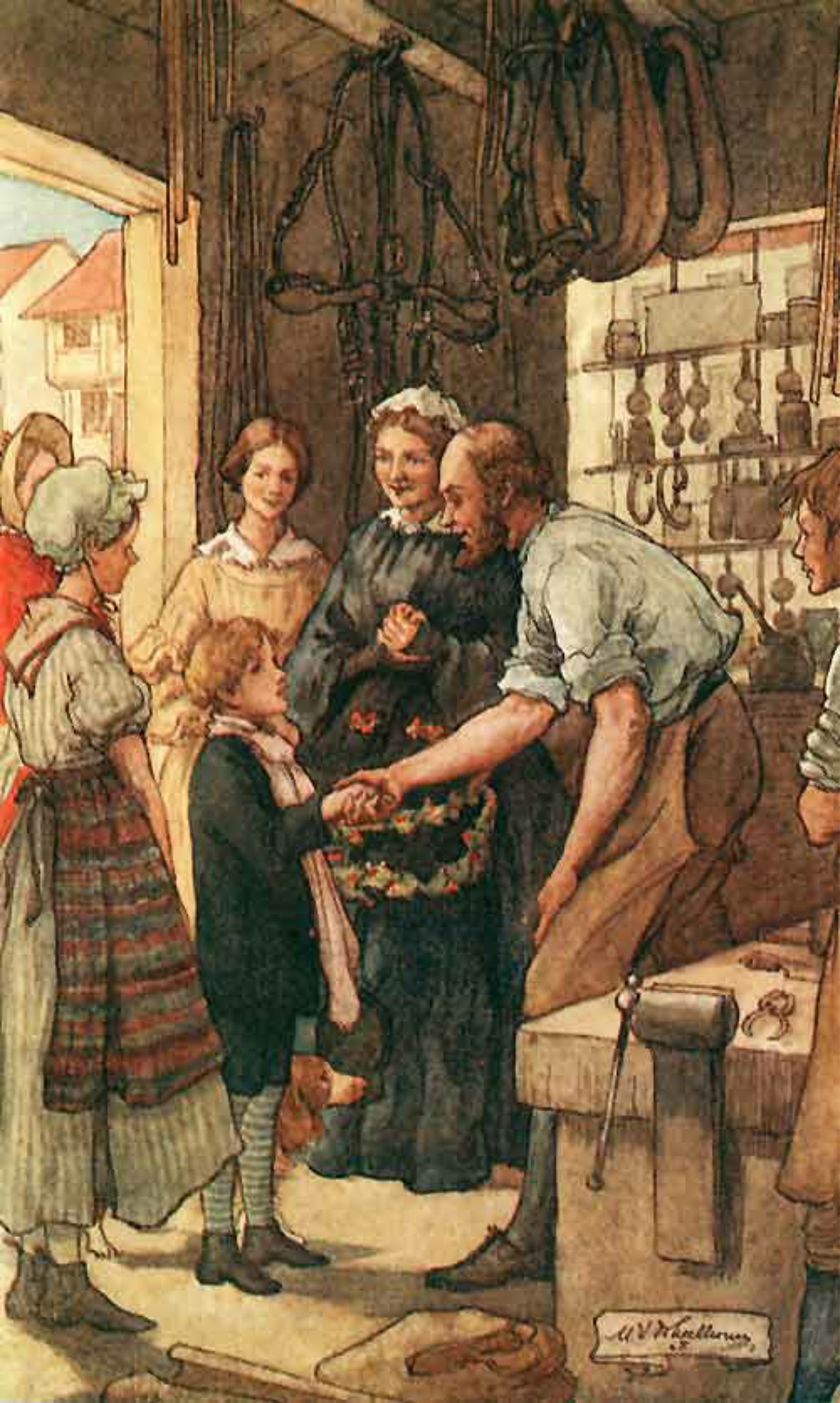Dwarven Apron
Have you ever wondered why it is that you so rarely see a dwarf without an apron? Well that is because for us it is a tradition and a badge of honour. Those of us who choose to be of a profession where an apron is a hazard are considered less than industrious. I mean every trade needs an apron of some sort. The only ones I can think of off hand are hunters, where the apron would impede their movement, and couriers. Why would a dwarf want to be a courier anyway? That is what we have sprites for.
Cultural Significance
For dwarves, the need for an apron is a long-standing tradition: one that signifies industriousness. A dwarven apron is designed to hold all the tools of the trade so they are accessible and within easy reach when needed.
The few trades where there are too many tools for the apron to accommodate. such as an innkeeper, are designed for appeal over tools.
Dwarves take pride in their aprons, as they show how they have progressed over their lifetimes. A dwarf may change professions many times over the centuries.
They are utilized in funerary services as well. When a dwarf has left their mortal coil they are laid to rest wearing their very first "true" apron and their last. This will be covered in further detail.
Apron Styles
There are several different styles of apron, from those of an innkeeper to a blacksmith. These are considered to be "true" aprons. The difference between a true apron and just an apron in the eyes of a dwarf, is the fact that dwarves are given aprons when they first learn to walk which is a basic part of their attire. Upon reaching the age of one hundred years or having chosen a profession dwarves are gifted with their first working apron.
Trades Aprons
Aprons which are designed for trades such as butcher, tanner, mason, carpenter, cobbler, and cooper, are made from multiple layers of cloth with loops from which to hang the tools of the trade.
A butcher and tanner apron would have dulled metal hooks sewn into them for hanging knives from.
The carpenter and cobbler, have loops for hammers and pockets for holding nails. The cobbler also has a hook or two sewn in for the shaping knives they would need for cutting leather and shaving the sole of the footwear.
A cooper has loops for holding drawing knives and differing weights of hammers, crafted out of hardened boiled leather.
Crafting Aprons
Crafting aprons are those used for the trades of blacksmith, farrier, leatherworker, jeweller, whitesmith, and scrivener. These aprons are crafted in thick leather.
Blacksmithing, farriering, and whitesmithing aprons have a variety of loops and pockets for holding hammers, punches and files. These aprons are crafted completely from leather and sinew for safety when dealing with the extreme heat of forge fires.
Leatherworking aprons are designed with multiple sheath-like pockets for storing the knives needed to cut and shape the leather. There are also pockets for differing sized punches and stamps. On the off-hand side of the crafter, there is a padded section designed for holding the needles needed.
The jewelling apron holds all the tiny tools of the trade from the hammers and pliers to the small files and blades. Attached to the neckstrap is a loupe.
Scrivening aprons have small loops for holding quills and pockets for the blades with which to sharpen them. There are a couple of larger pockets near the waist for carrying covered inkwells and the galls and iron needed to craft more ink.
Hospitality Aprons
Hospitality aprons are those designed for the everyday functions of housekeeping, innkeeping, and tailoring.
The first two are simple aprons with a loop or two for dusters and cloths. They vary in colour depending on the day or the style. Included are a number of pockets for carrying potholders and coasters.
A tailoring apron has a thick band of fabric sewn across the waist for a dual purpose; tying the apron on as well as a place to store pins. It has a loop for holding shears, and like the leatherworking apron, a padded section for the storage of sewing needles.
Apron Customs
Coming of Age
When a dwarf turns one hundred there is a celebration where they are gifted their first working apron. These aprons are always the finest quality available. They contain all the tools of the trade that will be needed at the start of the career, whether there is space on the apron or not. Thus if there are items such as anvils and lap desks they are included within the gifting. The family comes together to find or build a shop for the young dwarf to work from. There are times when those shops will include a home. Within the shop will be a place for hanging the apron, as well as a closet for storing worn-out aprons when they are replaced.
Retiring of the Apron
When an apron becomes worn out due to years of use or damage, it is not discarded. Instead it is hung in a special closet designed specifically for this purpose. These closets are crafted to be airtight when closed. Even if the apron is ratty it is kept for the funerary rites.
Funerary Rites
Within dwarven custom, the apron plays a large role during the funerary rites of the deceased. Dwarves are laid to rest in whichever manner they have chosen whether it is inhumation or cremation wearing their first and last aprons. These two aprons are used to denote the progression of the deceased's life. The remaining aprons are then either used for crafting keepsakes for the family or they are burned according to tradition. This means regardless of the manner of being laid to rest of the deceased, there is a funeral pyre for the family to attend and reminisce on the life of the one who has passed.
Item type
Clothing / Accessory
Related ethnicities
Raw materials & Components
Depending on the type of apron they are crafted from leather, cloth, or a combination of the two. Some have metal hooks worked into the crafting.
Tools
The designing of the aprons depends upon the family and the apron involved. Most aprons will have the family crest on them somewhere. The best-designed ones have the crest hidden within plain sight.






I love the apron tradition you've come up with. It makes me happy to think about. I really like all the professions you've described here, and how all their aprons differ from one another.
Thank you very much.